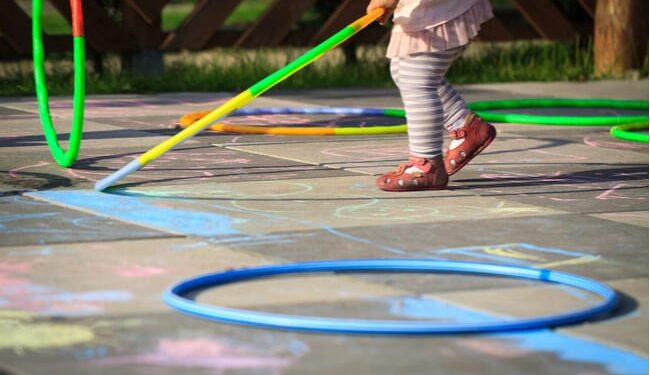Have you been exploring how to make creative children’s activities? When children play games, they are participating, excited, moving and giving their best effort. Games are addictive and have an internal change in our attitude immediately. Have you ever heard a child say, “I can’t wait till this video game is over?”
Children have fun during the game — not after the game. Therefore, it is imperative to plan games in your lesson plan. When planning games, children will experience the building blocks of learning-friendly competition, practice being a good sport, develop cooperating skills, and participate in activities that prepare them for more challenging games in the future.
You can take some of the simplest drills and make them fun games by using your creative teaching tactics. An innovative teaching tactic is having the child learn through visualization, because teaching using images makes learning entertaining and children will learn quicker.
In an example of teaching visualization using sandbags and hula hoops, the instructor will explain to students to imagine the hula hoops are gigantic plates and the sandbags are pancakes. They have to toss the pancakes inside the enormous plates for the T-Rex to eat for dinner before the music stops. To make it a fun game, you would add each pancake that goes into the gigantic plate is worth a point.
The instructor will ask the children, “Who can successfully toss five pancakes in the enormous plate while standing behind the fence?” One possibility is making the fence the red line on the gymnasium floor. The instructor will demonstrate the game into simple steps tossing a pancake into the gigantic plate:
- The arm is straight as a stick as you hold the pancake in the palm of your hand.
- You step with the opposite foot towards the gigantic plate — if the pancake is in the right hand, you will step forward with the opposite foot.
- Swing your arm back and release the pancake when your arm is in front of your body.
When providing opportunities for children to use visualization and create games, most children will be entertained and motivated, making it easier to learn skills. The human brain spent millions of years evolving into recalling images, and it is easier to remember a task than abstract ideas. Creative children’s activities and having children experience practicing visualization will add to the depth of an instructor’s teaching skills, while children will have fun and quickly learn more skill sets.

Holly Metzger-Brown
Holly Metzger-Brown, M.Ed., CSA, GC-ABA, BCBA, LBS is the Learn & Play Director at the York Jewish Community Center. She graduated from Lycoming College, where she played varsity tennis and basketball. She has a master’s degree in teacher leadership and education. Holly is a Board Certified Behavior Analyst, certified POINTE PROGRAM consultant, and certified tennis instructor. She has been published in several books, journals and magazines, including Onsite Fitness, Netplay, Wacky Ways to Succeed with ADHD, Strategies, TennisPro, Yorkids and Community Rec. She has been locally and nationally recognized for her youth fitness and sports programs.










